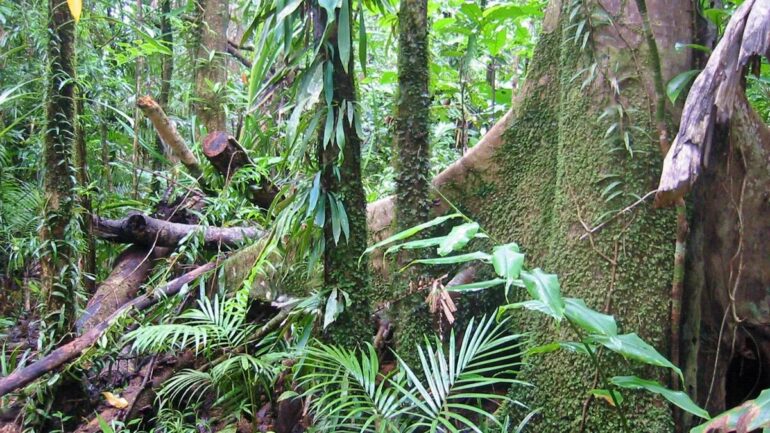Nitrogen is necessary when predicting how land plants will take up atmospheric carbon. That’s because nitrogen’s future trajectory will diverge from that of other factors of plant growth in the coming decades, according to a new study.
The terrestrial carbon sink sequesters a third of anthropogenic carbon dioxide emissions. To project how carbon sequestration might change in the coming years, scientists need to predict how plant biomass will grow or shrink—a challenging task.
One factor affecting plant growth is carbon dioxide (CO2) itself. CO2 kicks plants into photosynthesis overdrive in an effect called CO2 fertilization, which has resulted in a global “greening” over the past several decades. But atmospheric carbon is far from the only factor influencing plant growth.
Nitrogen from fertilizers, agriculture, and fossil fuels has an effect too. Still, models of the terrestrial carbon sink, called terrestrial biosphere models, include nitrogen only about half of the time. In a new study published in Geophysical Research Letters, Kou-Giesbrecht and Arora test how including or omitting nitrogen affects model projections.
The researchers compared two terrestrial biosphere models called CLASSIC-CN and CLASSIC-C. The first includes nitrogen, and the latter does not. They tested whether each model could accurately predict historical carbon sinks, and then they extrapolated the models to future scenarios. Specifically, they applied the models to three of the five Shared Socioeconomic Pathways, which represent a range of climatic and societal possibilities that might play out over the remainder of the 21st century.
Looking back in time, both models could accurately predict historical terrestrial carbon sinks. However, the two models diverge when predicting future carbon sequestration.
The carbon-only model overestimated the terrestrial carbon sink. The reason is that it lumps nitrogen’s fertilizing effect in with carbon dioxide. In the future, as carbon dioxide levels outpace atmospheric nitrogen inputs and nitrogen fertilization, the model will also overpredict how much plant growth, and therefore carbon sequestration, might occur.
The difference is particularly stark in the pathway involving the highest increase in atmospheric CO2, with the nitrogen-inclusive model predicting up to 64% less carbon sequestration than the carbon-only model at the end of the century. The authors say that accurate and policy-relevant terrestrial biosphere models must take nitrogen into account.
More information:
S. Kou‐Giesbrecht et al, Compensatory Effects Between CO 2 , Nitrogen Deposition, and Nitrogen Fertilization in Terrestrial Biosphere Models Without Nitrogen Compromise Projections of the Future Terrestrial Carbon Sink, Geophysical Research Letters (2023). DOI: 10.1029/2022GL102618
Provided by
American Geophysical Union
This story is republished courtesy of Eos, hosted by the American Geophysical Union. Read the original story here.
Citation:
Carbon sink models need nitrogen, says study (2023, May 1)



